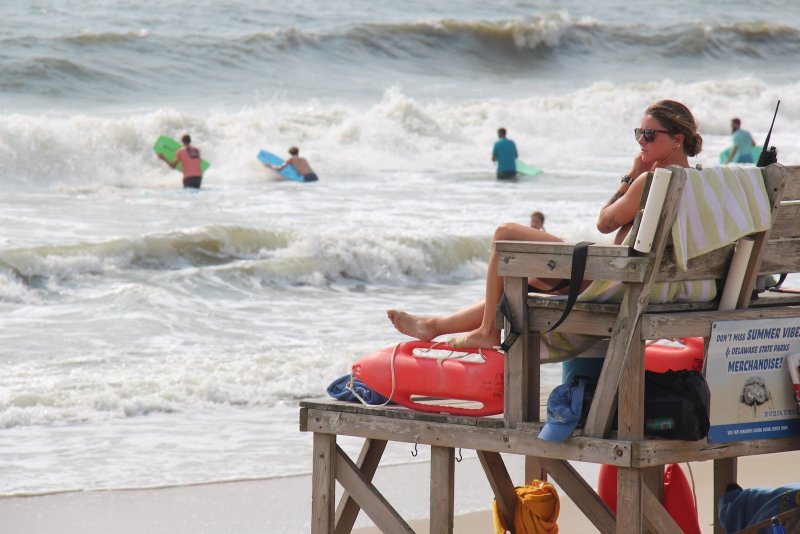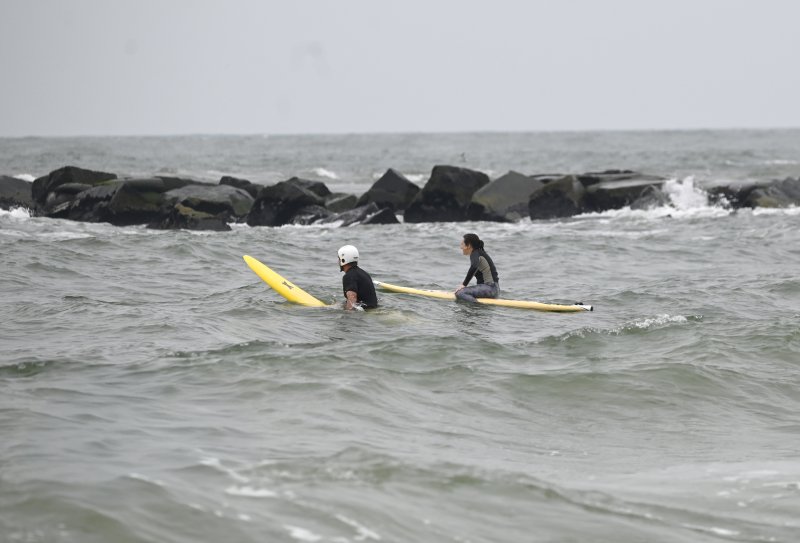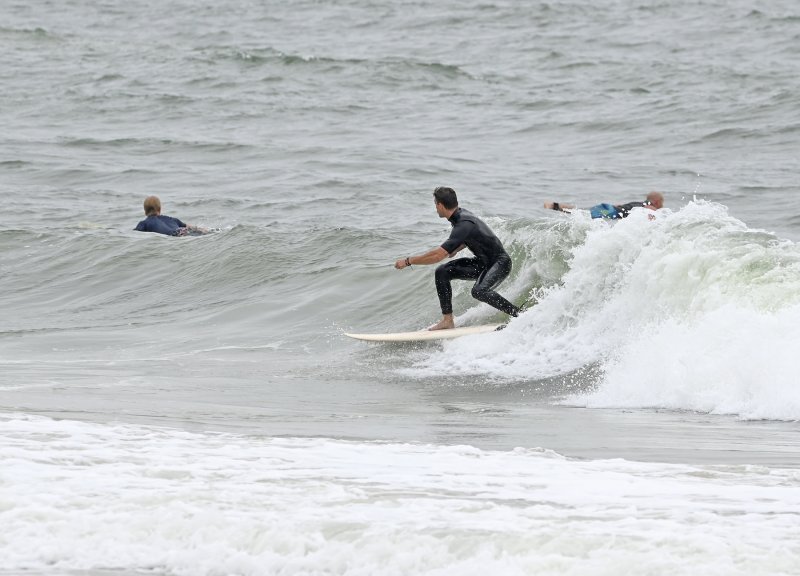Strong rip currents trigger wave of rescues
Seventeen-year-old Glen Miller was rescued the morning of Aug. 7 after being swept out to sea by a rip current at the main beach at Cape Henlopen State Park in Lewes.
“I got behind the breakers,” said Miller of Hartly. “I couldn’t get in. They came out and helped me.”
He was among about 30 people rescued in the past week by lifeguards at Cape Henlopen State Park alone, said Hannah Bieler, who is in her sixth year as a lifeguard at the beach. Bieler was not sure how many were rescued at other beaches.
“The current has been very strong,” she said.
Rip currents draw water away from shore and are dangerous for swimmers, who are unable to fight against them.
Beach patrol Lt. Kyle Wentling, who has worked as a lifeguard for eight years, said the rip currents have been the worst he has seen on the job. It’s resulted in more rescues than normal.
“They’re wild,” Wentling said of the rip currents. “It’s not even in the normal spots. We’ve seen this even 100 yards out.”
Lifeguards are being attentive to swimmers and ready to assist, he said.
Yellow warning flags were flying Aug. 7. Wentling said his staff was keeping everyone safe, but the warnings would be upgraded to red flags and the beach closed to swimmers if necessary, he said.
“We want to make sure everyone’s having a good beach day, but that everyone gets home safe,” he said.
Tyler and Eliza Robinson and their 6-year-old daughter, Adeline, had traveled from their home in Mercersburg, Pa., and were visiting the beach the morning of Aug. 7 during a three-day vacation to Lewes.
The Robinsons were walking in the shallow surf, not straying far from shore.
“We saw the warnings yesterday but decided to come out and see how it was,” Tyler said. “It doesn’t seem too bad.”
The National Weather Service posted rip current warnings Aug. 2 and 3, and again Aug. 7. The dangerous currents resulted from far-off storms and weather patterns. Another warning was possible for Aug. 8.
Tropical Storm Dexter and a low-pressure system to the southeast near the Outer Banks were producing groups of 4- to 6-foot waves, National Weather Service meteorologist Eric Hoeflich said Aug. 6.
Longer-than-usual gaps between waves contributed to strong outgoing currents, Hoeflich said. Gaps between waves were lasting 10 to 11 seconds, about twice as long as a typical day, he said.
Wentling recommended swimmers stay close to lifeguards and not panic or fight against the outgoing currents.
“If you get caught in a rip current, wait until it calms down and signal for a lifeguard,” he said.
Or swim parallel to shore until beyond the rip current before trying to swim back in, Wentling said, noting swimming against the current is futile.
“You’re never going to beat it,” he said. “No one’s stronger than the ocean.”
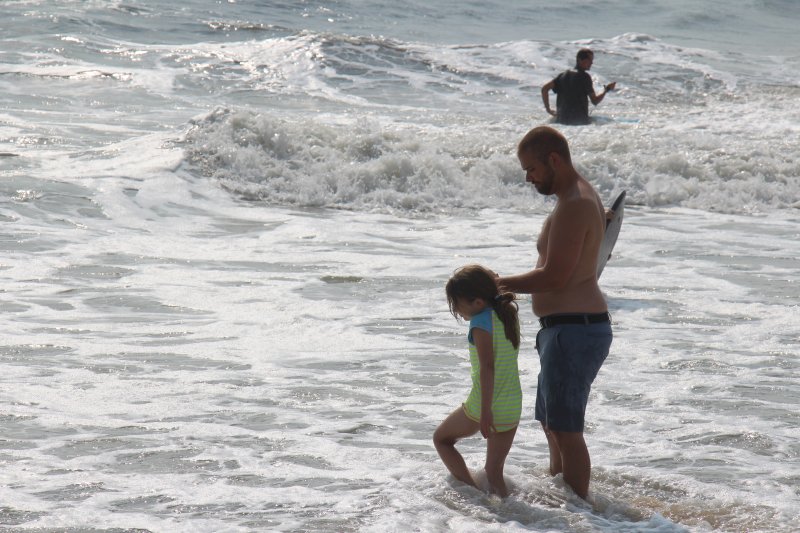
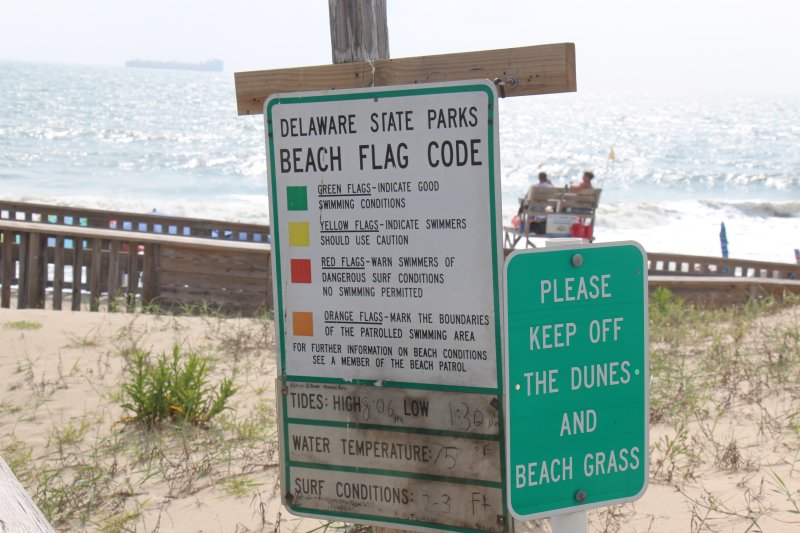
Kevin Conlon came to the Cape Gazette with nearly 40 years of newspaper experience since graduating from St. Bonaventure University in New York with a bachelor's degree in mass communication. He reports on Sussex County government and other assignments as needed.
His career spans working as a reporter and editor at daily newspapers in upstate New York, including The Daily Gazette in Schenectady. He comes to the Cape Gazette from the Cortland Standard, where he was an editor for more than 25 years, and in recent years also contributed as a columnist and opinion page writer. He and his staff won regional and state writing awards.
Conlon was relocating to Lewes when he came across an advertisement for a reporter job at the Cape Gazette, and the decision to pursue it paid off. His new position gives him an opportunity to stay in a career that he loves, covering local news for an independently owned newspaper.
Conlon is the father of seven children and grandfather to two young boys. In his spare time, he trains for and competes in triathlons and other races. Now settling into the Cape Region, he is searching out hilly trails and roads with wide shoulders. He is a fan of St. Bonaventure sports, especially rugby and basketball, as well as following the Mets, Steelers and Celtics.











